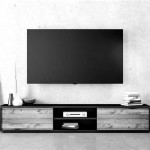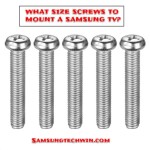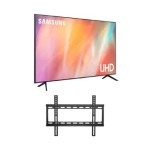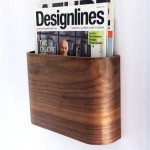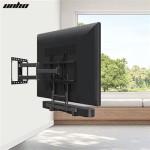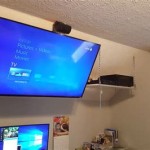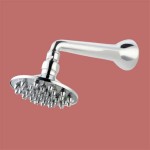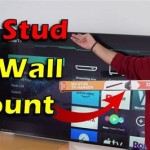Putting Up a TV Wall Mount: A Comprehensive Guide
Mounting a television to a wall can significantly enhance the aesthetic appeal of a living space, freeing up valuable floor space and creating a cleaner, more modern look. This process, while seemingly straightforward, requires careful planning, adherence to safety protocols, and the correct tools. This article provides a comprehensive guide to successfully and safely installing a TV wall mount.
Before beginning the installation, it is crucial to gather all necessary tools and materials. This typically includes a drill, stud finder, level, tape measure, pencil, socket set, appropriate screwdriver (Phillips and flathead), and of course, the TV wall mount itself. The instructions included with the specific wall mount being used should be consulted thoroughly, as they may specify additional or alternative tools. Neglecting this preparatory step can lead to delays and potential complications during the mounting process.
Choosing the appropriate TV wall mount is paramount to a successful and safe installation. Consider the size and weight of the television, as well as the desired viewing angle. Different types of wall mounts cater to various needs, including fixed mounts, tilting mounts, and full-motion mounts. Fixed mounts position the TV close to the wall with no adjustability. Tilting mounts allow for vertical adjustment, reducing glare and improving viewing angles from below. Full-motion mounts provide the greatest flexibility, allowing the TV to be extended, swiveled, and tilted in multiple directions. Ensuring the selected mount is rated for the television's weight is absolutely critical for safety.
Identifying Wall Studs and Optimal Placement
One of the most crucial steps in mounting a TV is accurately locating the wall studs. These vertical framing members provide the necessary structural support to hold the weight of the television and the mount. Using a stud finder is generally the most effective method for locating studs. Electronic stud finders detect changes in density within the wall, indicating the presence of a stud. It's recommended to verify the stud's location by testing with a small nail or screw in an inconspicuous area near the planned mount location. Mark the stud locations clearly with a pencil.
The ideal placement of the TV on the wall is another important consideration. Factors such as viewing distance, screen size, and furniture arrangement should all be taken into account. A general rule of thumb is to position the center of the screen at eye level when seated. This may require adjusting the height based on the furniture arrangement. Use a tape measure and level to accurately mark the desired location of the mount on the wall. Ensure the marked location aligns with the identified stud positions, as the mount must be securely attached to the studs. If the desired location does not align with stud locations, a different mounting solution or professional assistance may be required.
When marking the stud locations, it is advisable to mark both the center of the stud as well as the edges. This provides a visual reference for ensuring the mount is centered on the stud during installation. It is also helpful to use a level to draw a horizontal line connecting the marked stud locations. This line will serve as a guide for aligning the wall mount bracket and ensuring it is level.
Avoiding potential hazards behind the wall is also critically important. Before drilling, confirm the absence of electrical wiring or plumbing pipes behind the wall at the planned mounting location. Using a wire and pipe locator, or consulting blueprints of the building, can help prevent accidental damage to these systems. If there is any uncertainty about the presence of hidden wiring or pipes, it is best to consult a qualified electrician or plumber before proceeding.
Attaching the Wall Mount Bracket
With the stud locations identified and the desired mounting location marked, the next step is attaching the wall mount bracket to the wall. This involves aligning the bracket with the marked stud locations and securely fastening it to the studs using the appropriate hardware. The hardware included with the wall mount should be used, as it is specifically designed to withstand the weight and stress of the television.
Begin by holding the wall mount bracket against the wall, aligning it with the marked stud locations and the horizontal level line. Use a level to ensure the bracket is perfectly level before proceeding. Once the bracket is properly aligned, use a pencil to mark the locations of the mounting holes on the wall. These marks will serve as a guide for drilling pilot holes.
Using a drill with a drill bit slightly smaller than the diameter of the mounting screws, drill pilot holes at the marked locations. Pilot holes help to guide the screws and prevent the wood from splitting. The depth of the pilot holes should be slightly shorter than the length of the mounting screws.
After drilling the pilot holes, align the wall mount bracket with the holes and insert the mounting screws. Use a socket set or screwdriver to tighten the screws securely, ensuring the bracket is firmly attached to the studs. Avoid over-tightening the screws, as this can damage the wood and weaken the connection. Check the stability of the bracket by applying pressure to it. The bracket should be firmly secured to the wall without any wobbling or movement.
If the wall mount bracket has multiple mounting holes, use all of them to distribute the weight evenly. This will provide additional stability and security. Also, ensure that the screws are driven straight into the studs. Angled screws can weaken the connection and increase the risk of the mount failing.
Mounting the TV and Cable Management
Once the wall mount bracket is securely attached to the wall, the next step is to attach the TV to the bracket. This typically involves attaching mounting arms to the back of the TV and then connecting the arms to the wall mount bracket. Before proceeding, it is essential to consult the TV's user manual for instructions on attaching the mounting arms.
The mounting arms should be attached to the TV using the screws provided with the wall mount kit. Ensure the screws are the correct size and length for the TV's VESA mounting pattern. VESA (Video Electronics Standards Association) patterns are standardized mounting hole configurations on the back of TVs. Using screws that are too long can damage the TV's internal components, while screws that are too short may not provide sufficient support.
After attaching the mounting arms to the TV, carefully lift the TV and align the arms with the wall mount bracket. Most wall mount brackets have a locking mechanism that secures the TV in place. Follow the instructions provided with the wall mount to properly engage the locking mechanism. Ensure the TV is securely attached to the bracket before releasing it.
Following the TV mounting, cable management becomes important. Managing the cables connected to the TV is important for both aesthetics and functionality. Use cable ties or cable sleeves to bundle the cables together and keep them organized. Run the cables behind the TV and along the wall to conceal them from view. Consider using a cable concealer or wall plate to hide the cables completely. This will create a cleaner and more professional look.
Before finalizing the installation, double-check all connections and ensure the TV is level. Use a level to verify the TV is perfectly level. If the TV is not level, adjust the mounting arms or the wall mount bracket until it is. Also, check all the cable connections to ensure they are securely plugged in. Once everything is checked and adjusted, the TV is ready to be enjoyed.
In summary, putting up a TV wall mount requires careful preparation, accurate measurements, a firm understanding of wall structures, and adherence to safety guidelines.

How To Mount A Flat Screen Tv On Wall The Home

How To Mount A Flat Screen Tv On Wall The Home

How To Install A Tv Wall Mount Tips From The Pros Firefold

Wall Mounting A Tv Step By Guide Consumer Reports

Tv Wall Mounting Service Guide To Diffe Methods Install My Antenna

How To Wall Mount A Tv Led Lcd Abt Electronics Youtube

How To Wall Mount A Tv Step By With Mounting Dream

Tv Mounting Dos And Don Ts The Plug Hellotech

How To Properly Mount A Tv Wall Step By

How To Mount A Flat Screen Tv On Wall The Home

